Rotational Acceleration, Sequencing, and the Swing
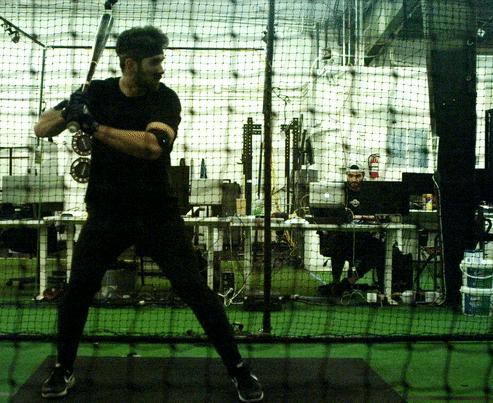
Bat speed and attack angle get the most attention of the bat sensor metrics (as they should). Still, rotational acceleration can also give a coach valuable insight into a hitter’s swing.
What is Rotational Acceleration?
According to Blast Motion, “Rotational Acceleration is a measure of how the hitter accelerates the bat into rotation.” This metric displays how quickly the hitter is getting the barrel on plane from their launch position.
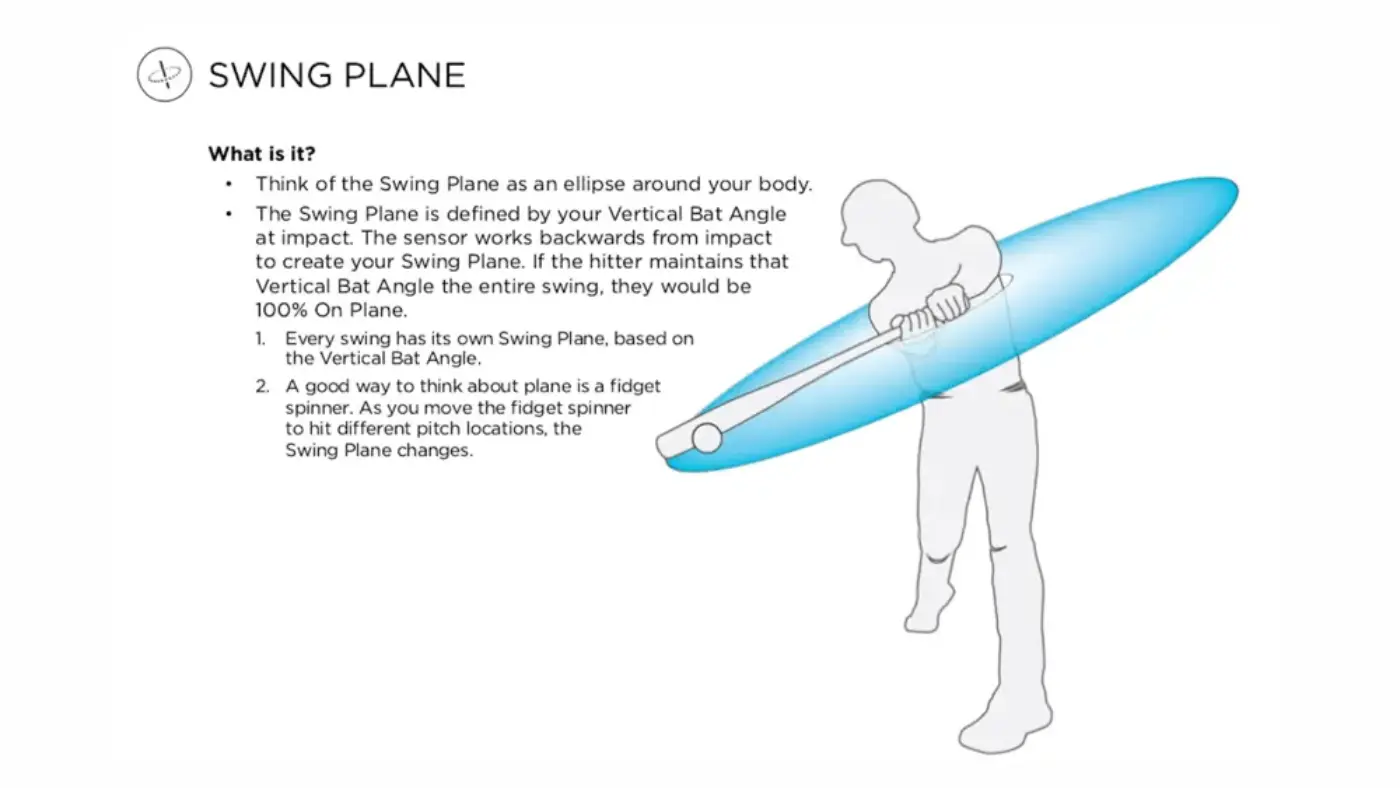
An easy way to think about rotational acceleration is as the hitter’s 0 to 60 time. The new Bugatti’s 0 to 60 time is 2.4 seconds, while a Nissan Altima’s time is 5.9 seconds. In this example, getting to 60mph is getting into the swing plane. They both get to 60 mph, but the Bugatti does it in less than half the time.
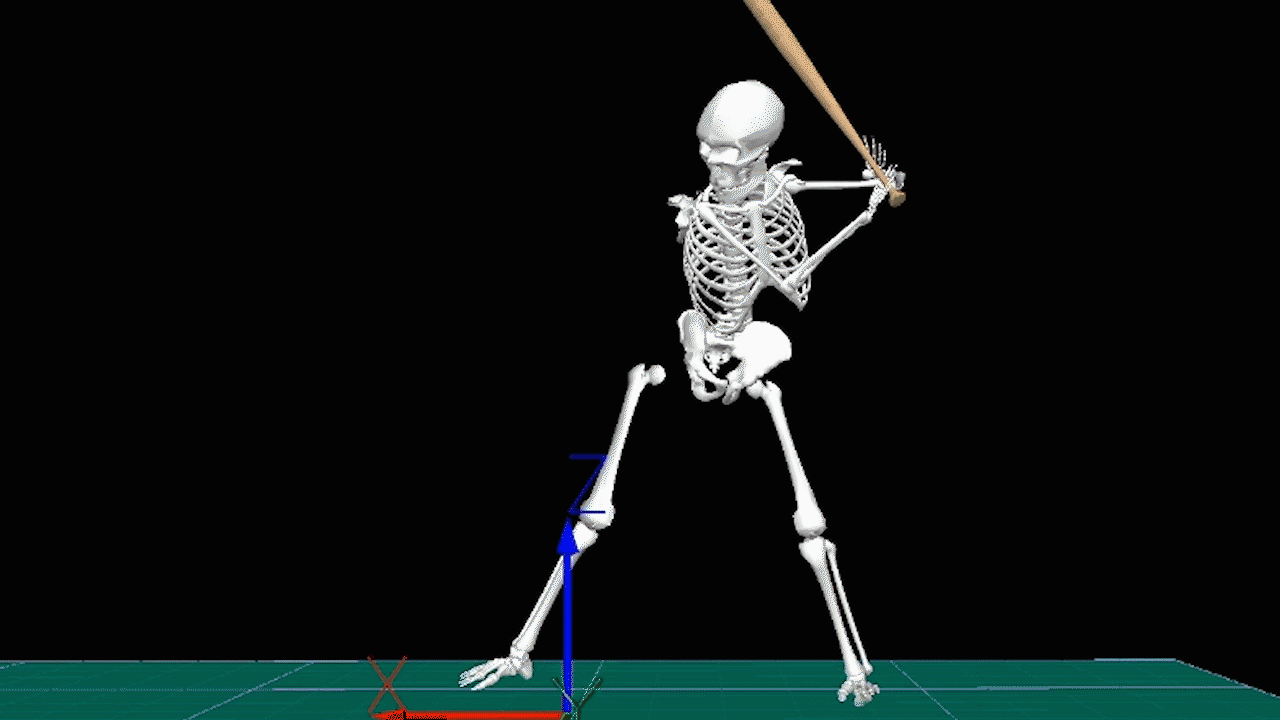
Foundations of Hitting
30 modules teaching you everything we know about hitting and hitting mechanics.
At Driveline, we consider anything below 10g as low rotational acceleration, 10.01g to 14.99g as medium, and above 15g as high. Here you can see our averages for rotational acceleration and other metrics by playing level. According to Blast, the MLB average is 17g.
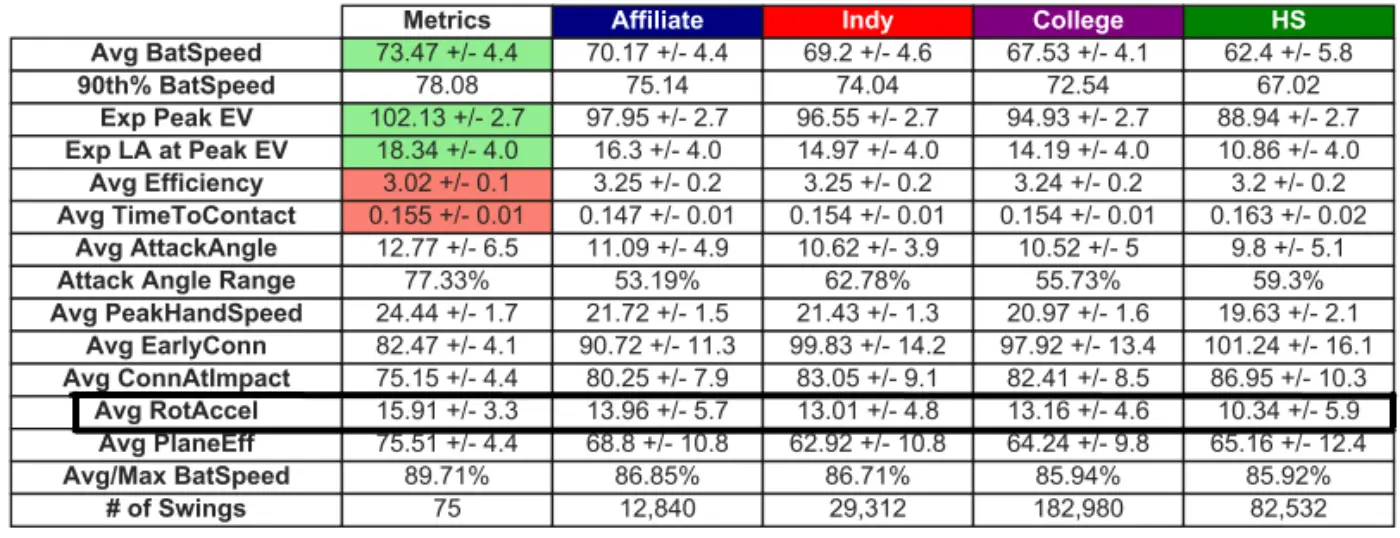
Our R&D team has paired Blast, K-Vest, and HitTrax data, allowing us to take a deeper dive into rotational acceleration to evaluate claims surrounding it. We have found relevant correlations with sequence percentage, time to contact, and peak hand speed.
Sequence Percentage
Blast Motion has theorized for a while that “hitters with high Rotational Acceleration exhibit high-level movement patterns and proper sequencing of segments through the swing.” In theory, this makes logical sense because proper sequencing would transfer more energy up the kinetic chain and into the bat, resulting in faster speeds earlier in the swing. Using the larger segments of the body efficiently will slingshot the bat into rotation/swing plane, instead of pushing it into rotation with the hands.
Sequence Percentage refers to the percentage of swings in which a hitter maintains the correct 1, 2, 3, 4 sequence (pelvis, torso, lead arm, hand). So, sequence percentage correlates with rotational acceleration in that the two increase together.
Here are two pro players, one with high rotational acceleration and one with low.
Average Rotational Acceleration – 22.1g

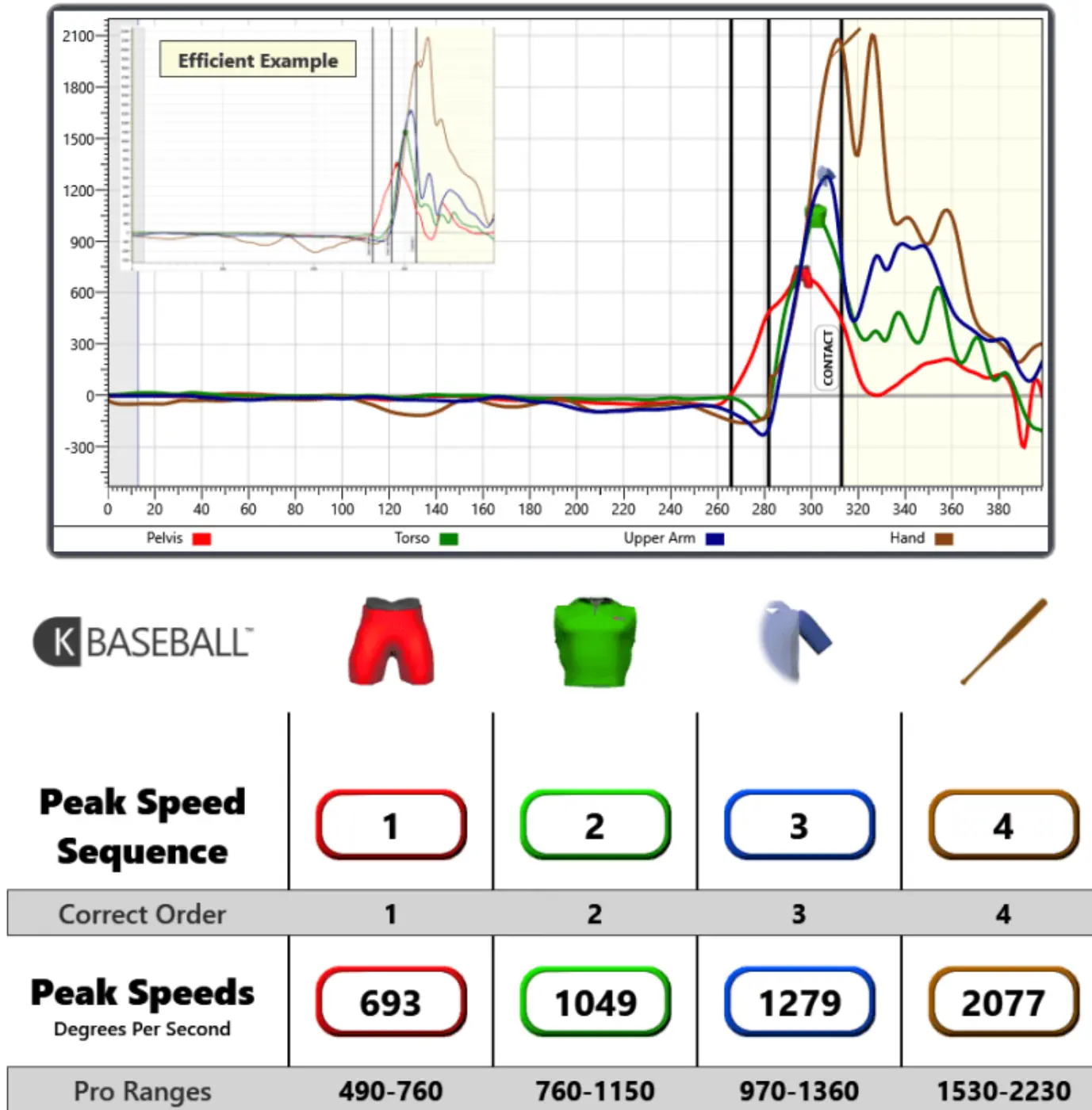
Average Rotational Acceleration – 7g
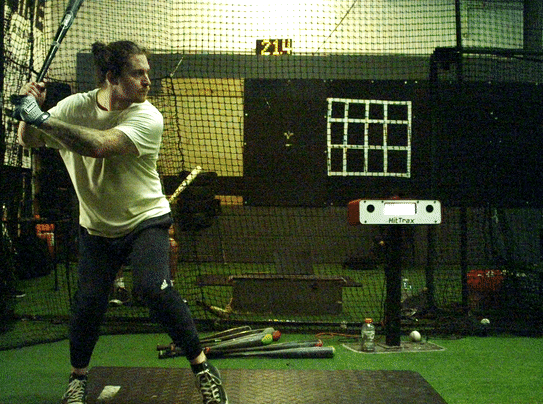
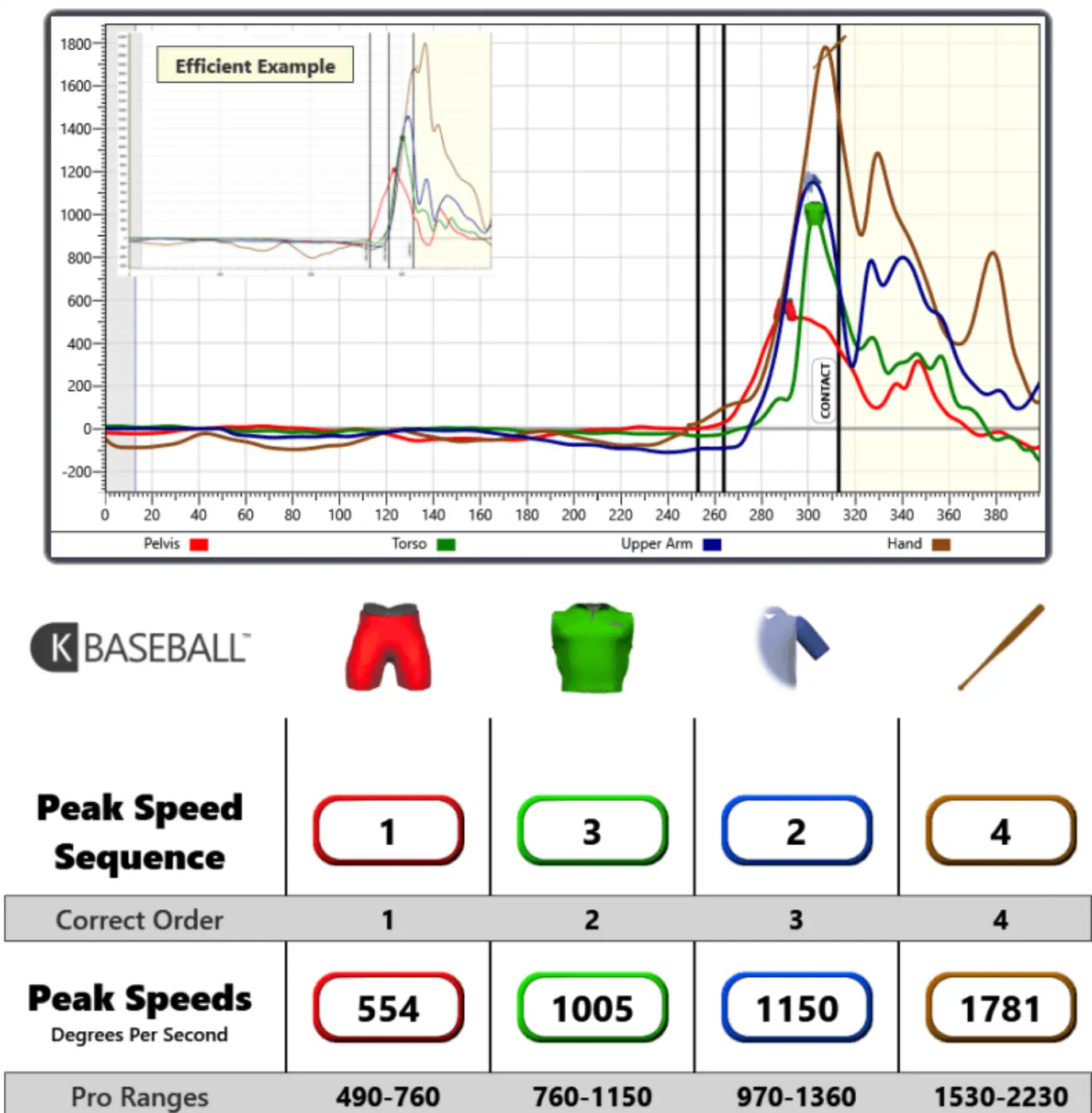
Both players create good bat speed, as Player One’s average was 72.3 mph, and Player Two’s average was 71 mph. You can see that Player Two’s torso reaches peak speed third, instead of second. If we take a closer look, we see more than just the lead arm going early/before the torso.
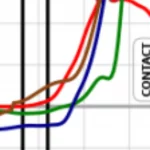
The image above reads as a timeline from left to right (horizontally), and speed or acceleration from bottom to top (vertically). The red line is the pelvis, green is the torso, blue is the lead arm, and brown is the hand/bat. Ideally, they accelerate in that order from left to right along the timeline. We can see here that the hand, pelvis, and lead arm accelerate before the torso, causing the push.

Peak Hand Speed and Time to Contact
Using the body efficiently is the ideal way to have a high rotational acceleration score and get into the swing plane quickly. The other way is to have very fast hands. Rotational acceleration and peak hand speed are both negatively correlated with time to contact. Therefore, having higher numbers in those two metrics will lower a hitter’s time to contact. And where a higher rotational acceleration score becomes advantageous for on-field performance.
When a hitter’s swing is quicker, it gives him or her more time for swing decisions. They can make a decision later or as the ball is closer to home plate, taking in more information for that decision.
We saw above in the Blast metrics chart that rotational acceleration increases as playing level increases. This makes sense not only because the players are getting better—but also because the time constraint for hitters is getting smaller as the level of play increases, due to pitching velocity and better stuff.
Other findings
We also took a look at the impact of point of contact based on the hitter’s rotational acceleration score. Many of our averages for level of play fell around the 13g mark, so we used that as the separator between fast and slow scores. Hitters with rotational acceleration above 13g are considered “fast” (gold line) in the visual, and hitters below 13g are considered “slow” (grey line). To take out a talent bias, exit velocity was adjusted to the individual player’s average, so zero is average. For point of contact, 0 represents the back tip of home plate, and 17 would be the front edge of home plate.
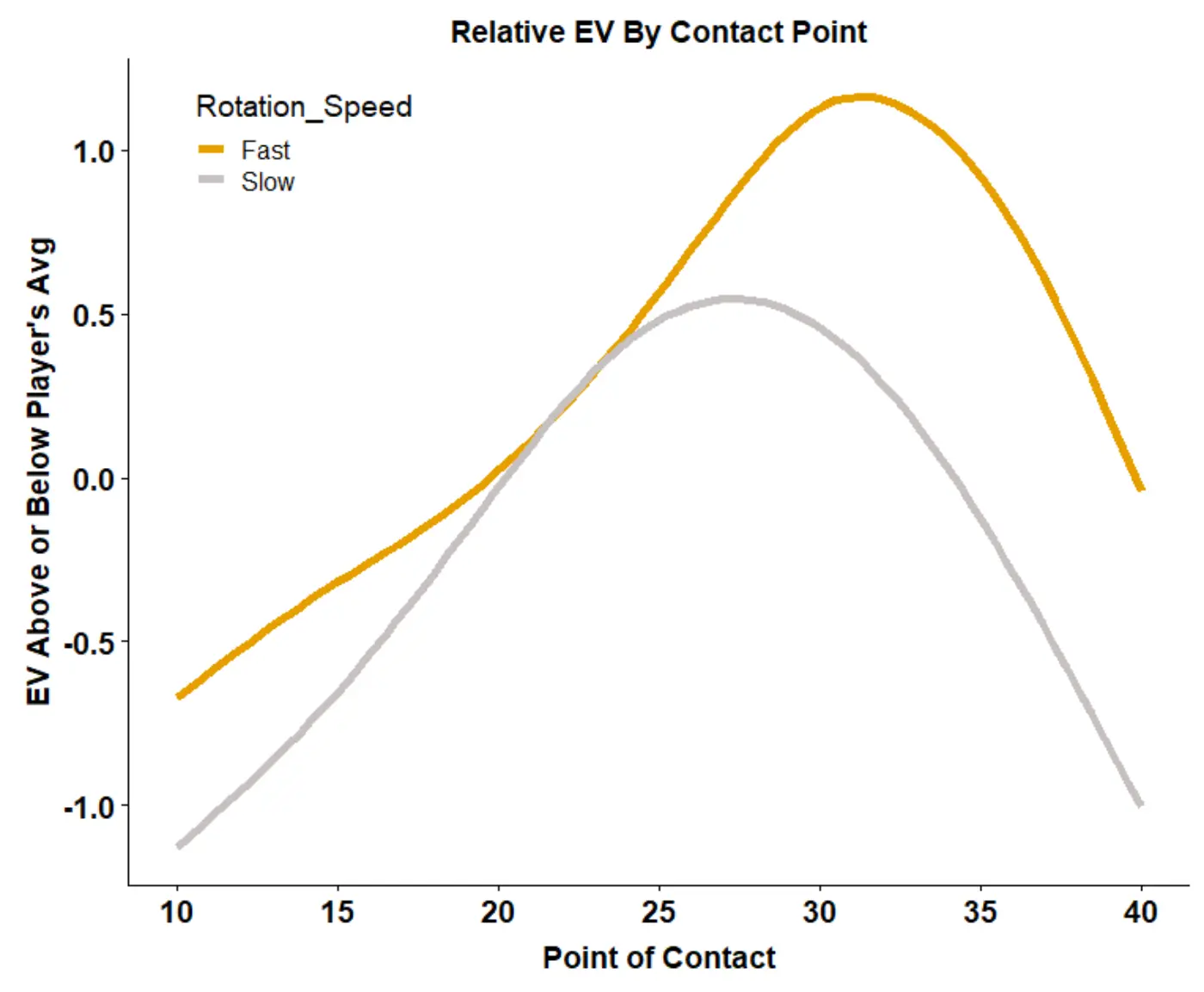
This data shows that the hitters with higher rotational acceleration were above their average exit velocity for a larger window of point of contact. This means that hitters with higher scores likely have better swing depth because they have more consistent exit velocities at various points of impact. This visual also shows that the same hitters see more of an increase in exit velocity out front than hitters with slower rotational scores. This can be factored into a hitter’s approach as well. Hitters with a higher score should potentially target or jump more pitches out front, while hitters with lower scores have a more conservative approach.
How to work on Rotational Acceleration
- Long bat – Helps with sequencing and bat path
- Bat speed trainer – Helps with sequencing, swing direction, and rotation
- Short bat – Using the torso/body more effectively
- Offset rotation – Improves swing direction
- Velocity – Above, we mentioned that the time constraint for hitters gets tighter as the level of play increases. Training should reflect that, so challenge hitters with velocity in front toss, machine and live.
Having higher rotational acceleration is advantageous and makes life easier in the box, but it is not a requirement to be a good hitter. Player Two above, who was used as an example of low rotational acceleration, is an outstanding hitter. However, life would be easier for him if he improved his rotational acceleration because it would give him more time to make swing decisions and make him more adjustable throughout the zone.

Become the Hitter You Want To Be
Train at Driveline
Train at Driveline
Interested in training with us? Both in-gym and remote options are available!
- Athlete Questionnaire: Fill out with this link
- Email: support@drivelinebaseball.com
- Phone: 425-523-4030
By Andrew Aydt
Comment section